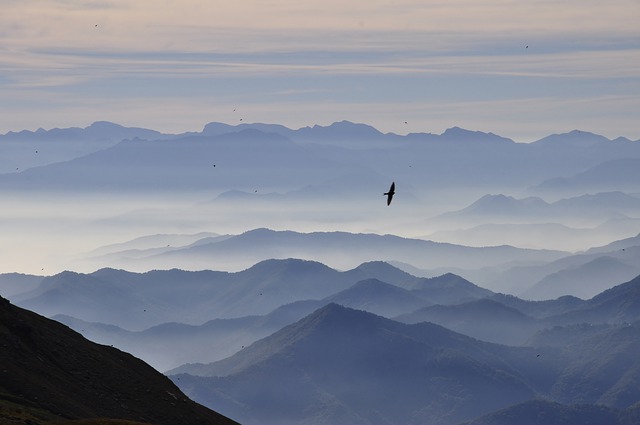
Hiking the plains of even the small elevations is one thing. But when you’re planning to extend your stay on top of the Alps or Everest, you need special preparations and training. Even though you can’t ever be fully prepared for the worst-case scenarios, there are certain precautions that need to be taken to make your journey much safer and more pleasant.
Therefore, here are 10 expert tips suitable for altitude hiking.
- Be Prepared For Altitude Sickness
Altitude sickness is caused by the lower pressure and reduced oxygen level at higher altitudes. Do not take altitude sickness for granted. If taken seriously, it shouldn’t be causing major consequences for you.
However, you can do very little to prepare for altitude sickness than taking precautions and making yourself acclimated to the altitude. But if altitude sickness is to occur, some prescriptions that can relieve some of the symptoms. A few of these medications include:
- Acetazolamide
- Diamox
- Ibuprofen
These medications work by countering respiratory alkalosis and reducing certain fluids in your body.
In serious cases, experts recommend descending to a lower level until your body is acclimated to the elevation. Hike higher, sleep lower.
- Gather Necessary Information
When hiking to the higher altitudes, gather adequate information before starting your trek. The information may include maps of the terrain, details about accommodations, fitness preparation, family trekking opportunities, and everything that you may find important.
Before taking the elevation, always stay ahead by referring to topological maps that define the highs, lows, and steepness of the trails. Gather information about the food and water sources on the trails. Ensure that the trail has diners and hotels at regular intervals. Refer to online hiking groups and ask your tour operator about the same.
If you have a set time for the visit, gather information about the weather. It’ll help you navigate the daylight and prepare your clothing accordingly. You can find weather information on the internet or by consulting your tour guide.
If the Alps is your dream it’s better to avail guided or self-guided tours available for hiking through Mont Blanc Treks. You’ll be guided about the weather, daylight, accommodations, and every other essential information that you may need.
- Take The Elevation at Your Own Pace
To prevent altitude sickness from happening and to reduce the risk of developing extreme altitude-related issues, it’s advised to take the elevation at your own pace. If you walk slowly, don’t try to keep up with your fast-paced peers to match them and vice versa.
Moreover, try to take as many breaks as required. Don’t push your ego-fuelled limits to the extreme. Keep it steady and make sure that you have enough time to reach your destination while the daylight is present; even if it means starting before the sun rises.
For snow-covered mountains, you may have to ascend more slowly than you’re used to. If that’s the case, take adequate snow gear with you to make the journey more achievable.
- Work on Cardio and Endurance
It is mandatory to prepare for the long hard hike to high altitudes through cardio and endurance training. However, don’t confuse altitude training and training for higher altitude.
Altitude training is what athletes do to improve their performance. They try to increase their metabolism & lung capacity and decrease their resting heart rate through these exercises. In contrast, if you’re going for a high elevation hike, opt for HIIT and cross-training exercises in your local gym, backyard, or anywhere else.
Make sure to go for long jogs at least thrice a week to build endurance and learn about your body. Keep listening to your body. Understand how much you can stretch your limits without taking a break. It may decrease a lot in the higher altitudes, but you’ll be able to adapt to it quite easily. Moreover, as lung capacity is critical for altitude hiking, although not necessary, you can start doing some VO2 max training by wearing an oxygen training mask.
- Drink Enough Water and Electrolytes
While hiking to high altitudes, bring enough water and electrolytes for the better. Without enough water or electrolytes, you risk getting dehydrated. And once you’re dehydrated, it takes a lot longer to replenish your systems. In dire cases, dehydration can even end up in a hospital.
The symptoms of dehydration include:
- Getting extremely thirsty
- Dry mouth, lips, and eyes
- Tiredness
- Less than adequate peeing
- Dizziness and headache
Apart from these, if you have other conditions like diabetes, diarrhea, heatstroke, and excessive sweating, you can be dehydrated more easily.
Experts recommend drinking at least 2 cups of water with every hour of hiking. However, be careful of Hyponatremia, a condition where sodium levels are reduced due to increased water intake. Keep a balance between water and electrolytes to avoid any critical issues from occurring.
- Get Oxygen Cans if You Have Breathing Issues
Your breathing issues may become troubling if you’re hiking to high altitudes. But, with enough preparations, a lot of hikers reach the summits without any trouble. In addition to consulting an expert trekking guide and a physician before taking the hike, consider using oxygen cans for emergencies.
Oxygen cans are handy and mostly fit all hiking bags. They come with a breathable mask that needs to be attached to the nozzle before inhalation.
- Stay Halfway for a Day or Two to Acclimate
As discussed before, acclimation is the best thing that you can do to prevent any unfortunate complexity.
If you lack any prior experience hiking over 9000ft, consider keeping the ascend slower than you walk in the plains to reduce the chances of developing altitude sickness and other issues. If you’ve had prior issues with altitude sickness, rely on that information to customize your camping elevations.
- Get Sturdy Shoes and Socks
Don’t go on a high-altitude hike wearing brand-new hiking boots. To determine if they can cause blisters, try them out beforehand. If they do, leave them at home or use two pairs of socks—one warm pair and one pair of wicking ones—to avoid blisters when hiking.
Consider using volume reducers under your insoles to prevent friction if your shoes don’t fit. Boots with laces are terrific choices since you can adjust how tight you want them to be.
- Gather Breathable Clothing
High-elevation hiking requires breathable clothing. When conducting extended walks, wicking fabrics that keep moisture off your body should be taken into consideration. Additionally, cotton textiles should not be used since they readily absorb moisture and may take longer to dry.
- Avoid Alcohol and Smoking
You shouldn’t be consuming alcohol while hiking; period. It would lift your heart rate, and blood pressure, and be responsible for making you lost in the wilderness. But, on the other hand, cigarettes, although we aren’t advocating for them, can be a bit effective for higher elevation hiking. Regardless, its harmful effects far outweigh the instantaneous benefits it may or may not offer.
The Bottom Line
Hopefully, you’ll be able to achieve your next high elevation hike without any issues by following the expert tips mentioned here. Don’t forget to prepare for altitude sickness, keep working on your endurance, and drink enough electrolytes. Additionally, acclimate yourself to the altitude and keep your shoes ready for the hike.





